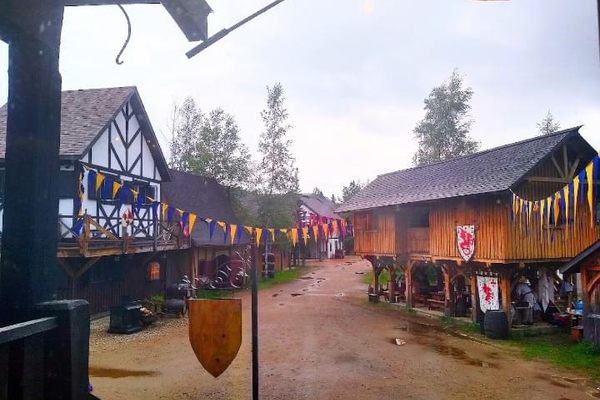Found: A Fancy Baby Boot From the 14th Century
Archaeologists in Switzerland unearthed a fragment of a very small shoe.

Sometime in the 14th century in Saint-Ursanne, Switzerland, there lived a very fancy baby. No one knows the baby’s name, but we do know the infant was fancy because of their tiny, beautiful shoes: intricately decorated leather ankle boots with buttons and clasps. Archaeologists uncovered fragments of this well preserved and frankly adorable artifact during an ongoing excavation of an old town in Switzerland’s Canton of Jura, according to a story in The Local Switzerland.
After spending the last seven centuries immersed in the groundwater of a large, wet depression left by the river Doubs, the baby boot surfaced under the cobblestones in the eastern part of Jura’s old town. Archaeologists quickly brought the boots to Marquita and Serge Volken, who work as shoe specialists at the Lausanne Shoe Museum, according to a statement from the Jura Office of Culture. The Volkens identified the boot as an especially rare find, joining the ranks of just five other known shoes of a similar design previously unearthed in Europe.

The Volkens believe the shoe likely belonged to a one-year-old child. The fragment measures around seven by five inches, with a top made of goat leather and a sole made of cow leather. But perhaps the most stunning facet of the boot is its decoration. The boot’s toe sports a delicately etched floral design with leaves sprawling out of the tongue, while the heel features a geometric arrangement of squares. Apparently power-clashing was in vogue in 14th-century Jura.
Today Jura remains a remarkably medieval place, with preserved Romanesque architecture still standing throughout the canton. The town of Saint-Ursanne also hosts a medieval festival every other year in July, during which people dress in period clothing and partake in activities from that era, including blacksmithing and constructing catapults. And the canton Jura has a unique claim to prehistoric fame, as its surrounding mountain range dates back to the time of sauropods and thus lends its name to the Jurassic period.
Organic material such as leather and wood can be well-preserved with waterlogging, the anaerobic process that occurs when an artifact is soaked in groundwater without any access to air, according to a report by Historic England. Waterlogging—which happens most often in bogs—can create eerily perfect preservations. Just imagine the furrowed forehead on from the fourth-century BC Tollund Man or the lingering fragrance of dairy of centuries-old bog butter. Though perfect for topographical details such as leaf carvings or laugh lines, waterlogging cannot preserve the color of the artifact they entomb, obscuring the original colors of this now-brown bootie. Meanwhile in Jura, the excavation continues, leaving hope that this lone bootie might be reunited with its mate.
















Follow us on Twitter to get the latest on the world's hidden wonders.
Like us on Facebook to get the latest on the world's hidden wonders.
Follow us on Twitter Like us on Facebook